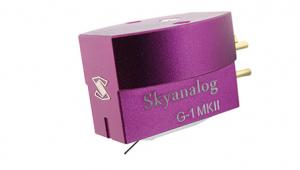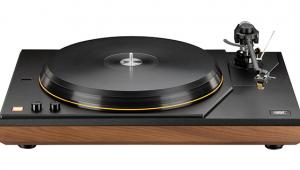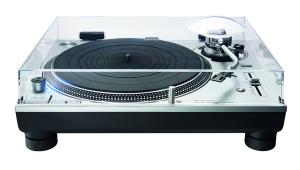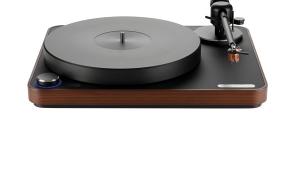DS Audio Master 1 cartridge
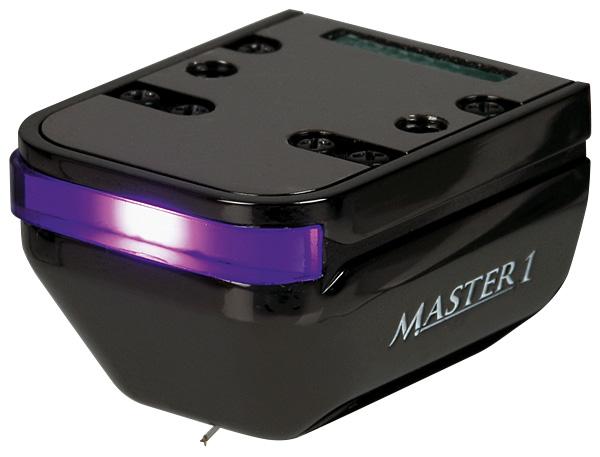
 DS Audio’s flagship optical cartridge is one of the most expensive we’ve tested – but the £20k price tag includes a dedicated PSU/equaliser. KK rediscovers his LP collection...
DS Audio’s flagship optical cartridge is one of the most expensive we’ve tested – but the £20k price tag includes a dedicated PSU/equaliser. KK rediscovers his LP collection...
Optical pick-ups were a dream in the 1960s and 1970s, but they were hamstrung by the light technology of the era. Weight, heat, power source – all mitigated against it. DS Audio, however, has the benefit of returning to the concept in the age of the LED, and its parent company is a global giant making optical sensors. Your £20k for the DS Audio Master 1 package, then, gets you cutting-edge design and manufacture rather than something a boffin cooked up in a garage. It also pays for the latest power supply-cum-phono stage, the cartridge not delivering a signal suitable for a conventional MM or MC phono input.
Mix And Match
All DS Audio cartridges are fully compatible with any of the company’s accompanying phono stages/equalisers, so you can mix and match them, the price breakdown being DS Audio Master 1 cartridge plus phono stage/equaliser at £19,995, the cartridge at £8,150 and the phono stage/equaliser £12,695 on its own.
Whether or not one wishes to match the dearer cartridge to the lesser unit is beyond the scope of this review – I didn’t have the less expensive equaliser to hand – but I would posit that those with sufficient dosh would go the whole hog.
We’ve actually covered these out of order, because the DS-W1 is the oldest model still available [HFN Nov ’15] while the least costly, the DS-002 [HFN Jun ’17], is born of the subject of this review, the flagship Master 1. Hence the ‘timeline’ is DS-W1/Master 1/DS-002.
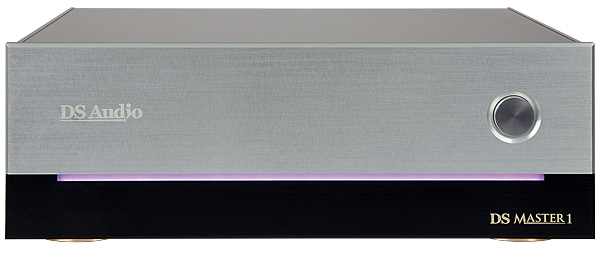
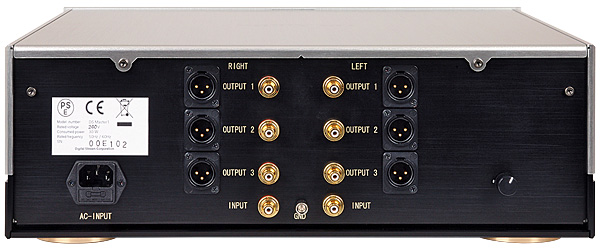
Significant when discussing a system that’s five times the cost of its later sibling are the physical differences. I realise ‘Never mind the quality, feel the width’ is a silly basis for an argument, but the less expensive of the two EQ units weighs 4.7kg, occupies a space of 310x92x235mm (whd) and offers only one output configuration via single-ended RCAs. The Master 1 equaliser box weighs 24kg, its size is 436x161x395mm (whd), and the box is filled with a PSU larger than you might find in a power amplifier.
Moreover, it offers three stages of subsonic filtering and both single-ended and balanced outputs for each. I swiftly found out that balanced was better in every case – more robust and controlled – but the preferred filtering had to be determined by ear on a speaker-to-speaker basis.
The differences reveal themselves in the way the bass behaves for both perceived extension and control. I found myself preferring Output 1 with its 6dB/octave cut-off below 30Hz for the LS3/5As, Output 2 with its double cut-off below 50Hz and 30Hz for my KEF LS50s [HFN Jul ’12], and Output 3 with its triple cut-off below 50Hz, 30Hz and then 25Hz for my legacy Quads [also see PM’s Lab Report].
Turning The Screw
Cartridge vs cartridge and not just equaliser is the other issue to address when comparing the Master 1 to the DS-002. Both share identical tracking forces (ideally 1.7g) and both weigh 8.1g. Construction, however, is where they part ways. The DS-002 employs aluminium for its body, the cantilever is aluminium and stylus has a Shibata profile. The Master 1 uses Super Duralumin for its body, has a sapphire cantilever and a ‘micro-ridge’ stylus.
As for set-up, the good news is that you can tighten the hell out of this thing – I used TechDAS’s new titanium screws – but the bad news is that its body is so shallow that I feared I might have to use a shim between it and the SME 30/12’s Series V-12’s headshell. This arm tapers to the front, and the fat end near the pivot wants to foul an LP’s lip if it’s set too low.
Also part of the problem is clearing the cueing bar. It took nearly an hour of fiddling with it to find the right arm height. But please note: this is specific to arms that taper and yours might not cause any problems in this particular respect.
That said, the Master 1 is not the greatest tracker I’ve used, regardless of the care you apply in setting overhang and VTA, so certain albums such as the 45rpm cut of Miles Davis’s Kind Of Blue [Mobile Fidelity MFSL 2-45011] might excite it enough to generate a wee bit of chatter.
This, however, was so rare an occurrence that it wasn’t enough to make me lose sleep. In every other way, its conduct was impeccable, not least because of its primary area of superiority over MM and MC designs.
![]() Uncanny Silences
Uncanny Silences
What listeners, when first hearing DS cartridges, find most disorienting is this absolute absence of grunge, hum or other background annoyances. ‘Uncanny’ is a word that springs to mind, while ‘blessed relief’ and ‘a means of seducing people away from digital’ also pops up.
I am sure that there are LP fanatics out there who will dispute this, swearing on their children’s/parents’/pets’ lives that their set-ups are silent as the grave. Fine: I’m ‘deluded’. Me? I have never heard LP playback, regardless of type or model of cartridge or phono stage that is utterly hum or hiss-free. OK, so the very best ones require you to put ear-to-speaker to hear it, but the schmutz is still there. The DS Audio system does away with this.







